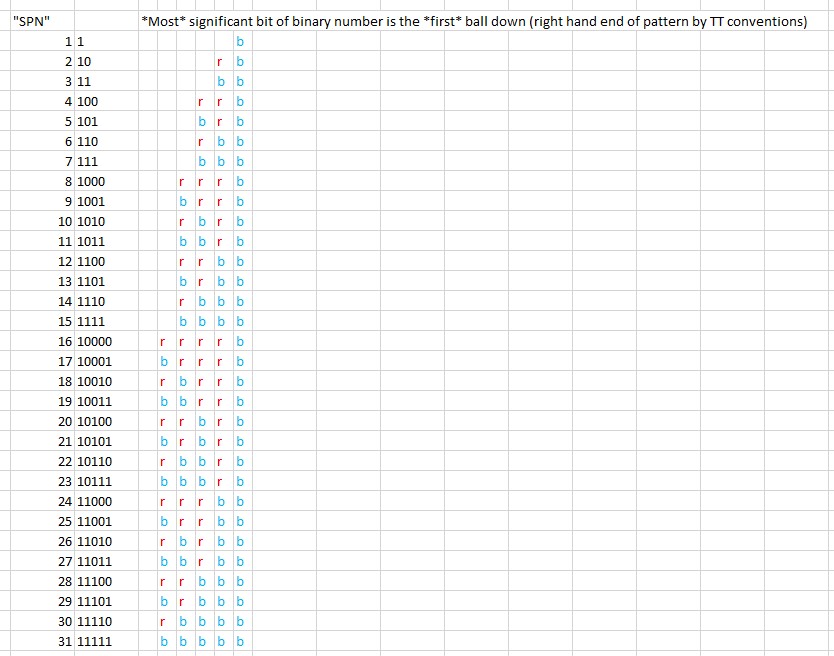The idea is to be able to assign a single, unique sequential index number to each and every TT pattern of balls.
A few of design principles:
- Uses binary - and lets say Blue is 1 and red is 0.
- Using the Standard pattern Number (SPN) should not require you to have specified the number of balls. That is - the SPN should also define the number of balls in the pattern. The reason for this is to remove issues of ambiguity around leading zeros.
- Must be east to get to the pattern from the SPN (a previous post of mine was alas rather lacking in this regard).
Illustrated example:

Note that we only need to number all the patterns that start with a blue ball (first ball to be released). Each of the patterns that starts with a red ball is a mirror image of pattern that starts with a blue ball. For example, SPN(18) : 18 in binary is 10010. The corresponding pattern is RBRRB; a blue followed by 2 reds, then a blue , then a red. The mirror pattern M-SPN(18) would be BRBBR (the first ball down being red).
This helps in systematically addressing certain classes of problem, notably “What is the first pattern that cannot be created using a standard set?”.
Particularly interested in the thoughts of @Florentin and @RingTheBell.